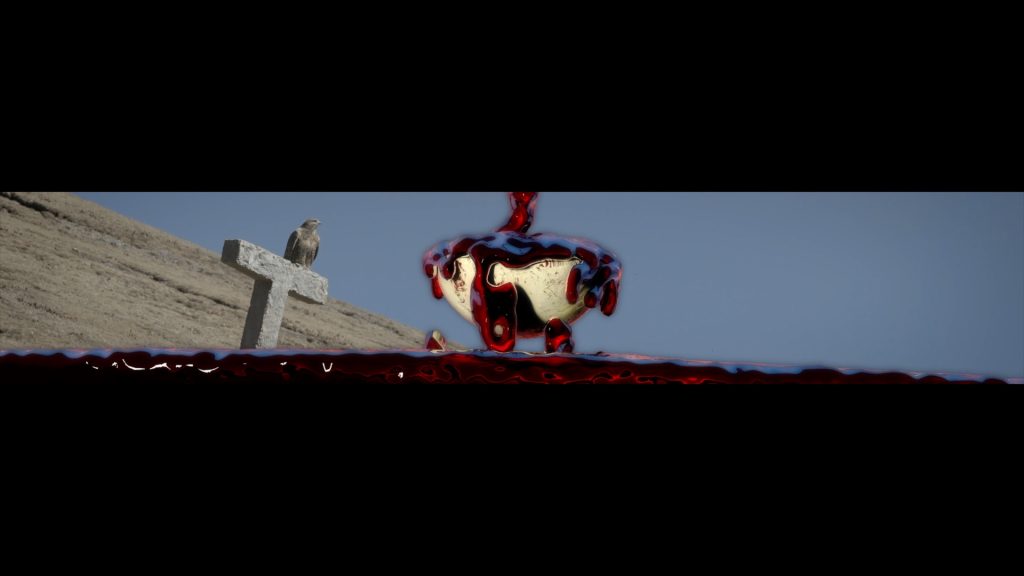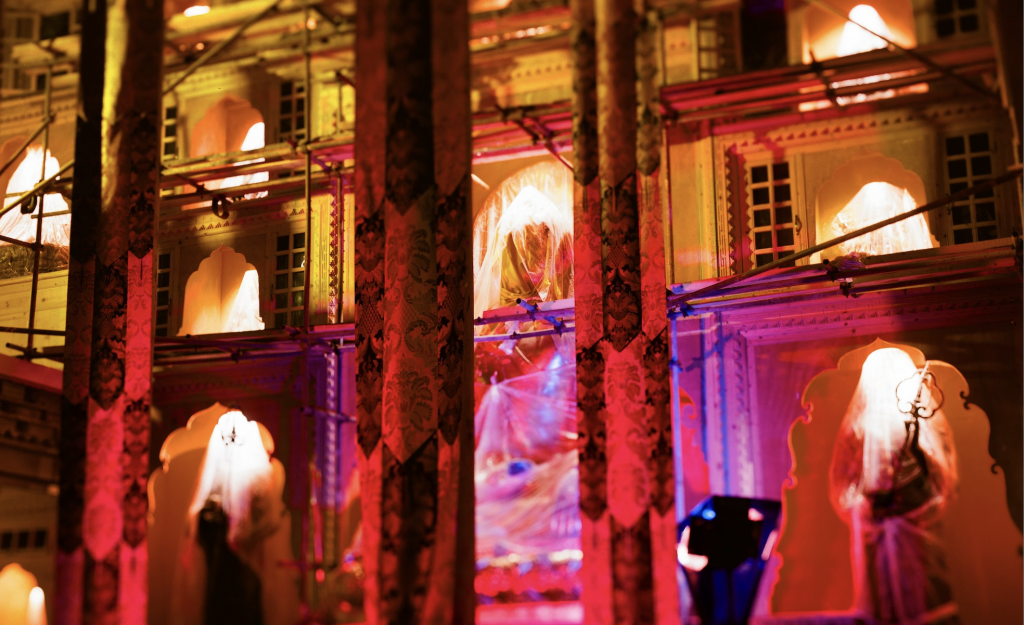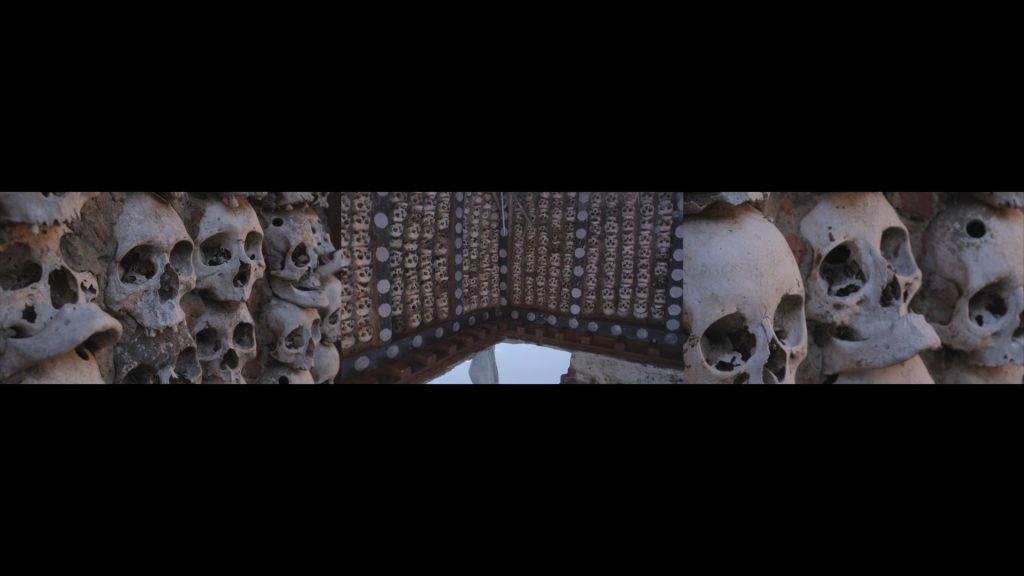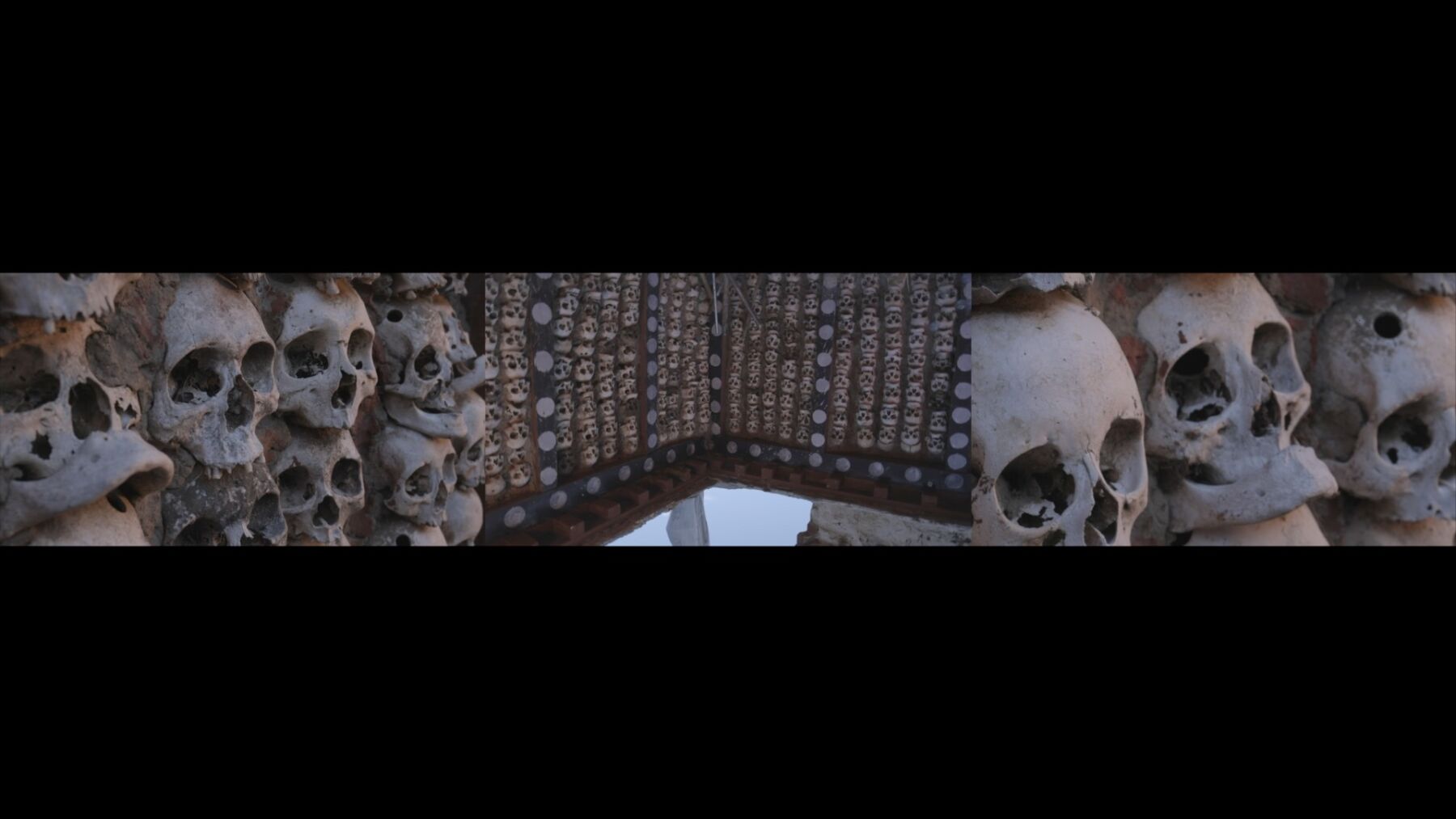Text by Piotr Bockowski

All hope abandon ye who enter here is written over the gate of Dante’s Inferno, and according to Karl Marx, the same words are repeated over the gate of science. This hellish phrase became the theme of this year’s Transmediale, which after the lockdown absence of 2021, it dedicated its physical exhibition to failures of infrastructures, dead ends of technological society and overall civilizational crisis.
As it brings its audience through the various circles of hell in digital modernity, located this time at Berlin’s Kunst Akademie, the exhibition presents a labyrinthine succession of visions pertaining to technological catastrophe. Here, technology is interrogated not as progress but as disasters, following the realisation of Virilio that every technology carries its own negativity, which is invented at the same time as technical progress – thus, the conception of our electric media promises certain cases of electrocution.
A sense of disappointment, which was so overwhelming during the systematic paralysis of lockdowns, now has become profoundly accentuated by the personal absence of Tianzhuo Chen – by many considered the most expected contribution to this past transmediale. The random circumstance of the last-minute cancellation of his flight out of Beijing only indirectly points to the current difficult situation for the artist in China.
After establishing himself as one of the most original young media/performance artists in Europe, between the 2015 show at Palais De Tokyo (Paris) and the 2018 show at Barbican (London), his brilliant theatrical imagination was compared to Tatsumi Hijikata, Alejandro Jodorowsky, Shuji Terayama, Leigh Bowery or Matthew Barney, only to offer complex performative visions involving numerous actors and unique, surreal choreographies.
Then, after achieving mastery in his own style of elaborate group theatre direction, Tianzhuo moved back to China over 3 years ago and ended up performing only 4 strictly private and considerably smaller shows there, hosted behind closed doors by contemporary art institutions of Beijing and Shanghai.
Self-alienated from public events in the cultural framework of the Chinese Communist Party line, Tianzhuo seemingly moved away from urban performance art toward the mysticism of the Tibetan Plateau landscape. A glimpse of that is offered via The Dust video installation at Transmediale.


The camera enters a hostile mineral environment, considered by Tibetans as the landscape of the dead, and indeed Tianzhuo’s video shows no people throughout. Whirling praying wheels are moved by the wind blows, the sound of wind instruments echoes in empty spaces accompanied by no musicians, and voided temple interiors hide statutes under wraps, obscured by shadows.
A shutdown of the ritual at a Tibetan Buddhist temple depicted as a Chinese construction site is obviously related to the termination of tourism due to the ongoing strict covid lockdown policies of authoritarian Beijing governance. Still, it also gives an intense impression of the iconoclasm of Byzantic orthodoxy or idol destruction by the puritan New Model Army, if not Soviet mutilation of Georgian icons.
Tianzhuo Chen, a devoted Tibetan Buddhist himself, finds a certain advantage in this suspension of ritualistic spectacle, accompanied by the undoing of religious décor. The emptiness of the Himalayan landscape in his video installation opens up as a media portal to a post-human underworld.
With this outlook, what’s particularly intriguing is that in the absence of human performers, Tianzhuo decides to digitally animate 3D-generated demons, which are edited over the filmed footage of dusty expanses. Traditional human shamanic dancers of the death are replaced by undead digital animations of monstrosity, which suggests a rather strange mystical realisation that digital media art can transcend the limits of human life and establish communication with the afterlife.
The video narrative of The Dust, importantly devoid of human performers, led spectators towards the grandiose final scene of Sky burial, playing into the Transmediale exhibition theme as a technological catastrophe of human bodies. In this funeral practice, also called “bird-scattered”, corpses are decomposed by exposure to dust of the mountains and digestion of the carrion birds. Tianzhuo filmed packs of vultures circulating over a valley, later augmenting the footage with digital vulture head totems. His media performance became of disappearing human bodies, transformed into beyond-human circulation of digital animations.






